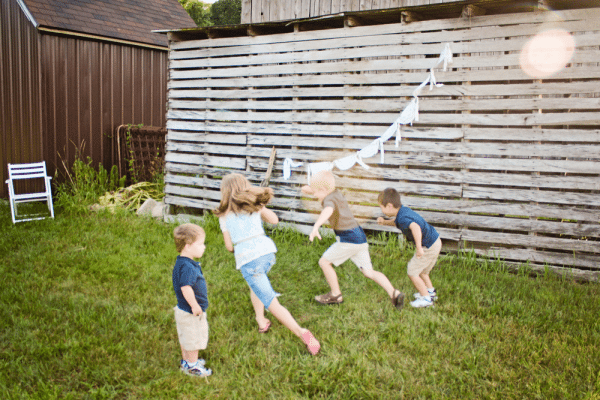“I was so angry for so long. I felt real hate, Mom!”
A child in my home recently confessed in the privacy of our conversation. They were speaking about the time when adoption trauma made its way into our home. When siblings were physically injured by a new addition, when lying became a part of everyday conversation and mom and dad were still finding their footing.
We have adopted three children with varying degrees of special needs in the last three years. We doubled the amount of children in the home. And we have done our very best to walk our children through the trauma their new siblings bring into our home. Sometimes we get it right, sometimes we miss the boat completely.
We always explain to prospective adoptive parents that they need to expect everyone in their home to fall apart. This is not about bringing a broken child into your home for healing. This is about all of you recognizing that you are every single one in need of healing.
Adoption will tear at the fabric of your family each and every time. It’s the job of parents to work every day to sew it back together. And it is hard. You are falling apart and your new addition is in the middle of one of the world’s biggest traumas. Then you turn around and suddenly the other children you have nurtured for so long and had banked on holding it together are showing signs of trauma.
– They are losing their tempers faster than lighting strikes
– They are fighting over small things like snacks
– They are crying over a tiny scratch on their arm
– They are catching every virus in school this year
– They sleep longer
– Sometimes they can’t sleep
– They are scared at bedtime
– They start regressing in every developmental area of their lives
These are a few of the things to watch for in your children. Watch for them, because sometimes they are quietly entering their own trauma. The best thing you can do is create a safe place for them to express all of their emotions. Allow them to say what is bothering them out loud. Be honest with them. They may not even be aware of what is happening to them or why they are feeling out of control of themselves and their emotions.
Practically speaking:
1. Find time to be alone with each child. It’s often in these times that they feel free to express how they are really doing.
2. If you have little ones, color together and see how they are expressing themselves.
3. Give them tools for anger. It’s not just the adopted child dealing with anger. Try a punching bag, punching a pillow, screaming into a bowl of cold water. A hammer and a huge log worked wonders on one of our kids. (age appropriate of course)
4. Take them for a run. Exercise can really help and pounding that pavement has worked miracles in many people!
5. Talk about how God gave us emotions and what matters is what we do with those emotions.
6. Give them your personal examples of times when you were overwhelmed with emotion and how you handled it or even mishandled it and what you learned from it.
One of the best things you can do is to model back to them how to handle these big feelings. Let them know that when you yelled at them for not getting dressed fast enough that you were wrongly passing anger onto them. And apologize. Apologize a thousand times. They will cling to it and learn from you. We are all going to fall flat on our face during adoptions, but falling down is a beautiful chance to mend what was broken.
We are all broken people and adoption brings all of our faults to the surface. Teach your young children about God’s redeeming love in their life. Take their hand and walk them to the cross and point to Jesus and whisper to them of the scandalous grace that tossed every single sin of theirs into the depths of the ocean. They will see you breaking a thousand times and when it is their turn to break, sit with them. Listen to the ugliness of their anger and hold them when they cry in shame. There is beauty here, Friends. Because in their shame they want to hide, and here is where we show them Jesus. He is glorious in that moment when He steps down and covers our shame, their shame.
I believe God is redeeming every single one of us through the process. It will strip your children of their ideas of what goodness and fairness is. They will learn from their earliest years some of life’s biggest questions. I watch teens wrestle with the idea of why God allows evil to exist. So many young adults are yelling about the injustice of this world. I watch my own children knowing that injustice personally.
And the most beautiful thing is happening. These kids of mine have seen evil, tasted its lingering grasp, and instead of being angry with their Creator, they miraculously shower love where evil once ran freely. They have turned the other cheek hundreds of times and it humbles me.
It hurts my mama heart to watch them be hurt by adoption. I want to rescue them. I want to deny them this pain, this journey. But when I step back and witness what is happening I know that God is in this. He is, once again, giving beauty for ashes. And I cannot help but smile at what He is creating here in my very own home.

They are not just better kids because of this trauma. They are better people, better humans.. They are capable of the kind of empathy that our world is lacking. They know that the world isn’t fair. They believe deep within their souls that love is stronger than any injustice. They are growing up strong, so strong, in their belief that the world is wrong about what is acceptable, and what is worthy.
They breathe out the love of Christ and fearlessly embrace what the world is throwing away. And someday this generation of children growing up in the midst of trauma, in the middle of these adoptive families…
Y’all, just wait. They are gonna change the world.


























Leave a Reply